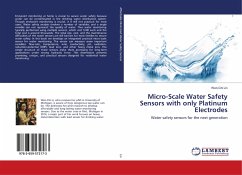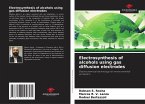End-point monitoring at home is crucial to secure water safety because water can be contaminated in the drinking water distribution system. Though end-point monitoring is crucial, it is still not practical for most users. Water safety analysis involves a number of variables, and a single variable can not represent the quality of water. Thus water monitoring typically performed using multiple sensors, which cost $100 each and the total cost is around thousands. The total size, cost, and the maintenance difficulties of the water sensors are still barriers for most families to secure water safety. In this book we develops an integrated practical micro-scale sensor for water monitoring. The sensor can measure seven important variables: flow-rate, temperature, ionic conductivity, pH, oxidation-reduction-potential (ORP), lead ions, and other heavy metal ions. The simple structure of these sensors make them promising for long-term applications under strong hydraulic force. This dissertation presents promising, unique, and practical sensors designed for residential water monitoring.
Bitte wählen Sie Ihr Anliegen aus.
Rechnungen
Retourenschein anfordern
Bestellstatus
Storno








